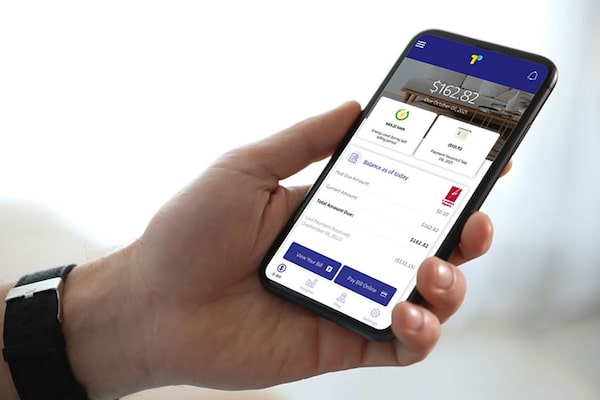
Through an energy management app called Trickl – developed by London Hydro based on an open-data standard platform called Green Button – consumers are opting to power their appliances and electronics, heat and cool their homes based on real-time information on available renewable energy resources.SUPPLIED
In the southwestern Ontario city of London, a growing number of energy consumers are using a powerful tool to make choices that lower power consumption and reduce their carbon footprint.
Through an energy management app called Trickl – developed by London Hydro based on an open-data standard platform called Green Button (recently mandated in Ontario) – these consumers are opting to power their appliances and electronics, heat and cool their homes and, in some cases, charge their electric vehicles based on real-time information on available renewable energy resources.
Trickl alerts users to times during the day when demand for energy is at its highest or at its lowest, and maps out the region’s distributed energy resources, including those that produce solar energy. Trickl also shows them, in real time, how much energy their appliances are using.
“It all comes down to empowering consumers by arming them with knowledge,” says Syed Mir, chief information officer and vice president, corporate services, at London Hydro. “With the Trickl app and Green Button, energy consumers can carefully monitor their energy use and make informed decisions about their consumption habits.”
The Green Button concept is one that spans borders and utilities. The long-term goal, says Mr. Mir, is to have all utilities and third-party providers sharing information in real time on an open-data platform that gives each Green Button contributor and user ownership and control of their data and potentially enable them to trade green energy credits in the future.
In addition to being a founding member of the Green Button Alliance – the non-profit organization behind Green Button – London Hydro holds the distinction of having the first certified cloud-based Green Button platform in North America, which is now also being used by six other utilities.
As part of its Green Button rollout, London Hydro installed solar panels at eight sites operated by London and Middlesex Community Housing (LMCH) and invited tenants to participate in a pilot project. Through the Trickl app, participants could choose which appliances to automatically turn down or off during peak hours, as well as log what they did daily – such as laundry or cooking – using solar energy.
“We had tenants who would normally not get a hydro bill raising their hands to participate simply because they wanted to do their part for the environment,” says Mr. Mir. The 2021 pilot with LMCH resulted in 9,605 hours of net-zero emissions (achieved when the amount of greenhouse gas produced is cancelled out by the amount that’s been eliminated), 12,000 kilograms of carbon offsets and 47,100 kilowatt hours of solar energy. In addition, seven tenants with solar rooftops saw their hydro bill reduced by 35 per cent.
Project participants were clearly engaged. A solid 90 per cent reported an increased knowledge of distributed energy resources, and 85 per cent said they timed their energy usage with the availability of solar energy. Almost all – 95 per cent – said they would participate in similar projects in the future.
London Hydro’s other Green Button projects include an Enbridge pilot that uses hybrid heat pump systems that switch between traditional and renewable energy sources, as well as a use case that, among other things, gives users information on public and private electric vehicle chargers.
“We’ve been on this digital journey for quite some time,” says Mr. Mir. “We believe that what’s good for our customers and for utilities is also good for the environment.”
Advertising feature produced by Randall Anthony Communications with Canada’s Clean50. The Globe’s editorial department was not involved.